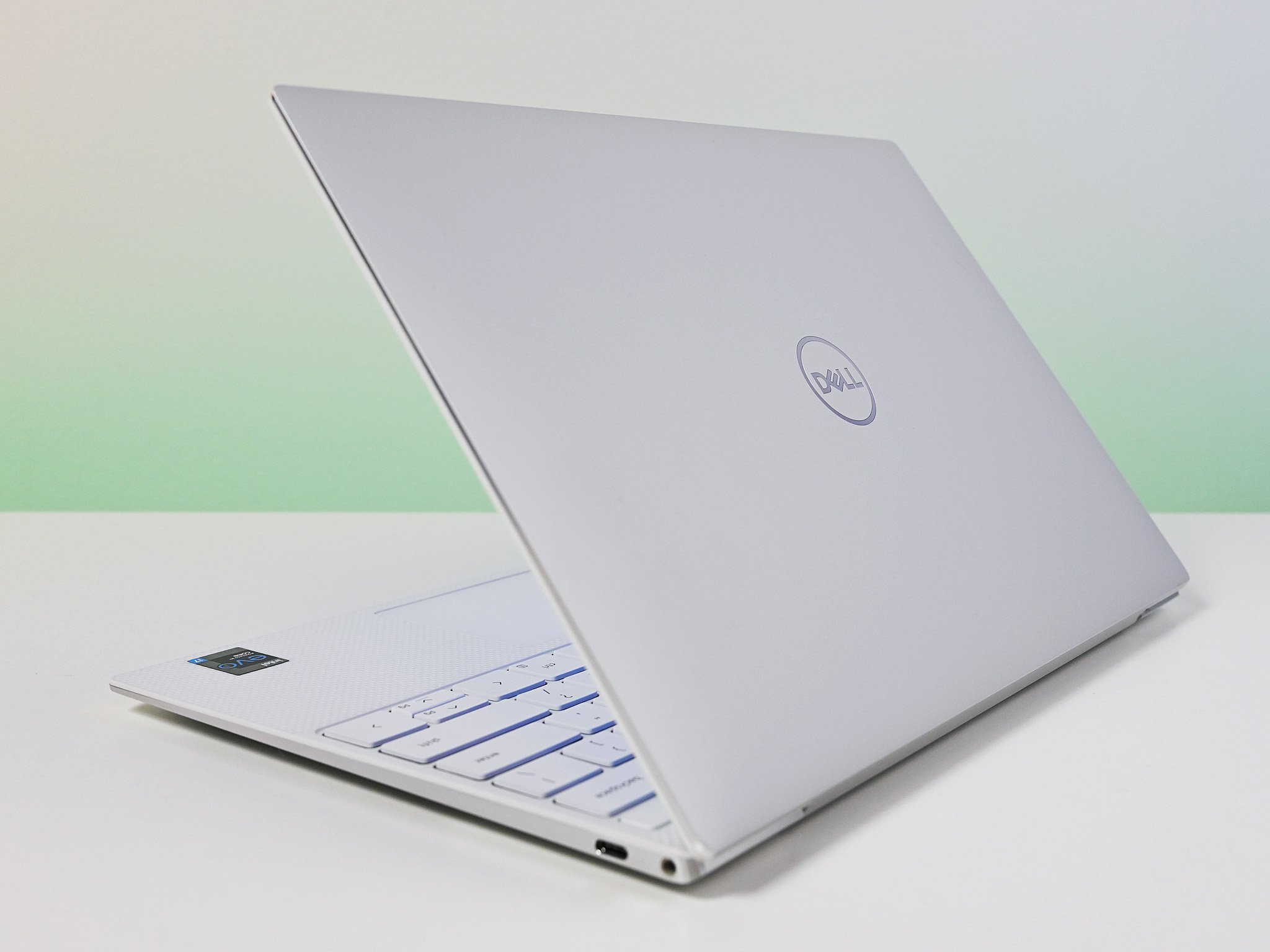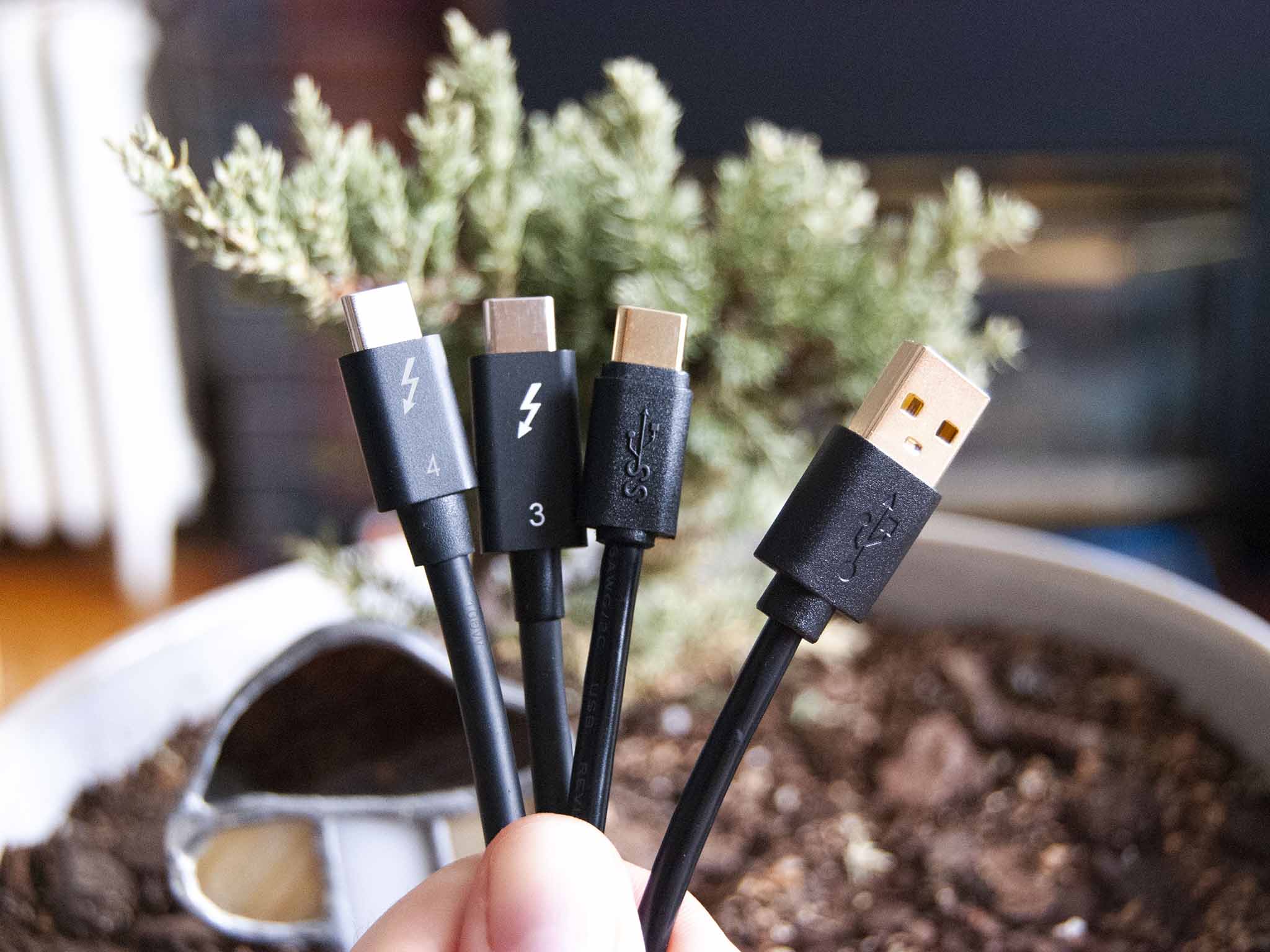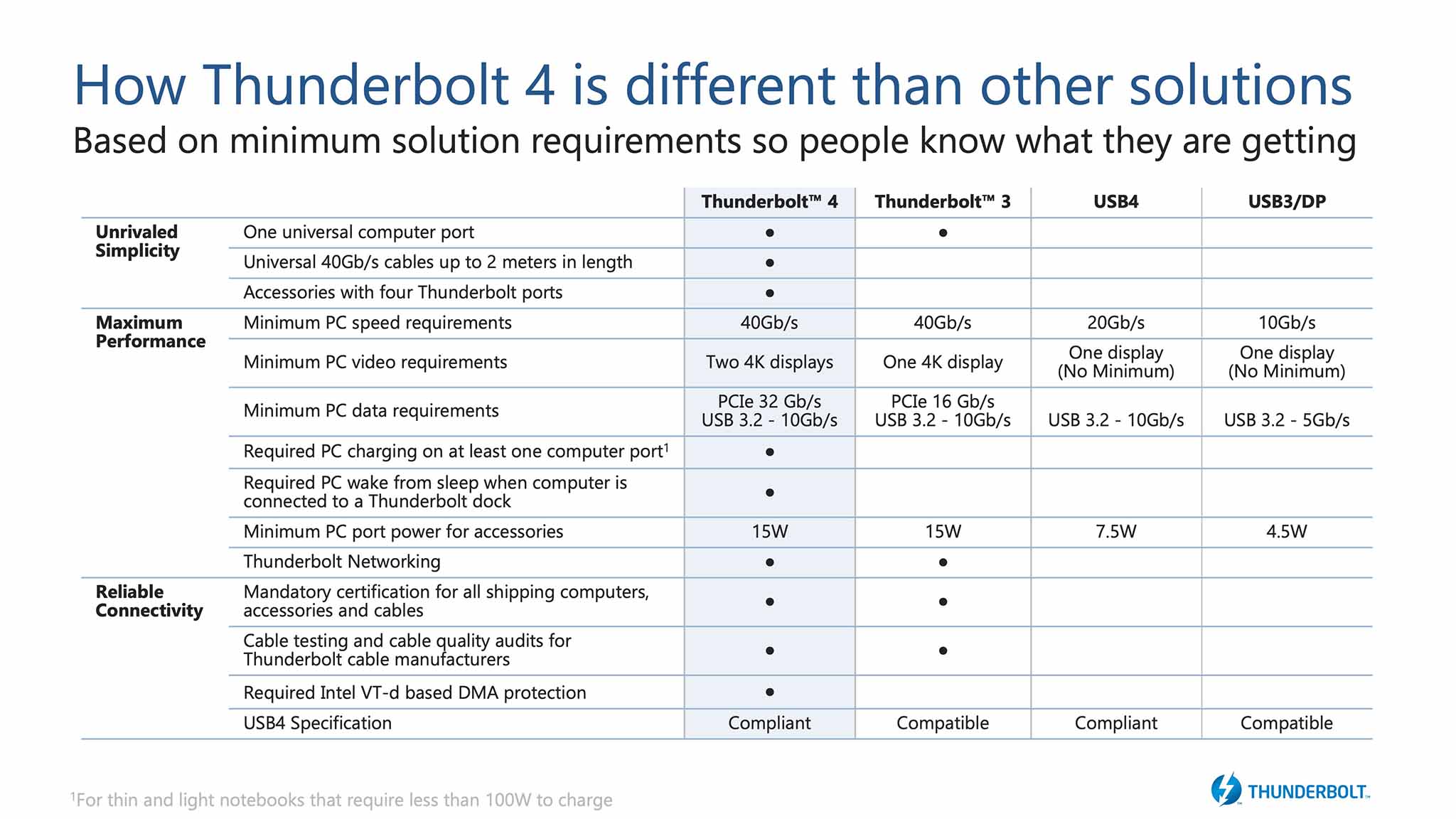Confused about the current port landscape? So is everyone else. We attempt to decipher some of the differences between Thunderbolt and USB.
If you're shopping around for a new laptop or some wired accessories, you've probably encountered a whole bunch of different names for what seems to be the same thing. With Thunderbolt 4 slowly replacing Thunderbolt 3 and USB4 coming into style as the next big USB specification, the terms are crowding together into a bit of a tangled mess. We break down how all these different technologies and specifications compare to each other so you get what you need.
Thunderbolt 4 is taking over for Thunderbolt 3
Thunderbolt is sort of its own thing, a technology developed by Intel with help from Apple. It's more of a brand name than a specification, and Intel has been pushing it forward with Ultrabooks ever since 2011. Thunderbolt 3 uses the USB-C form factor and includes just about everything you need in a single cable, including USB 3.1, DisplayPort 1.2, and PCIe. That's why it can be used to connect monitors, accessories, external storage, and a whole lot of other devices.
Thunderbolt 4 is taking over for Thunderbolt 3. It includes support for the new USB4 specification, DisplayPort 1.2, and PCIe. Thunderbolt 4 is also compatible with just about everything else, including all Thunderbolt versions (with the proper adapter for Thunderbolt and Thunderbolt 2) and USB.
The successor still relies on the versatile USB-C form, and it still has a 40Gbps bandwidth. However, many of its capabilities and minimum performance levels have been improved over Thunderbolt 3.
Minimum video support has been upped, with Thunderbolt 4 now boasting at least support for two 4K displays at 60Hz or one 8K display at 30Hz. Thunderbolt 3 can handle dual 4K displays with the right setup, but it only needs to handle at least a single 4K display to be called Thunderbolt 3.
Thunderbolt 4 takes things to the next level with a new set of minimum performance requirements for video support, PCIe bandwidth, and more.
There's also double the amount of PCIe bandwidth required, bumping Thunderbolt 4 up to 32Gbps from Thunderbolt 3's 16Gbps. If you often use removable storage — like something from our best external hard drive collection — you should see theoretical transfer speeds up to about 3,000MB/s with Thunderbolt 4. This extra bandwidth will also help anyone who uses an external GPU to turn their Ultrabook into a gaming machine.
The best Thunderbolt 4 docking stations add support for up to three downstream Thunderbolt 4 ports, and it adds Direct Memory Access (DMA) protection via Intel's Virtualization Technology for Directed I/O (VT-d) to help deal with threats. If you have a desktop setup, you'll be able to pull your PC out of hibernation just by touching the accessories. Thunderbolt 4 will also work with cables that measure up to two meters, with longer support expected in the future. And laptops below the 100W charging mark will need to include at least one port capable of charging.
The bottom line here is that laptops with Thunderbolt 4 can guarantee better port performance. Thunderbolt 3 is still an excellent alternative and can do a whole lot, but buying Thunderbolt 4 is the way to go if you want the best option heading into the future.
USB4 is the next high-performance USB standard
 Thunderbolt 4 port on the XPS 13 9310
Thunderbolt 4 port on the XPS 13 9310
USB4 is the next update to the Universal Serial Bus (USB) standard, as named by the USB Implementers Forum (USB-IF). Previous USB versions have been on a wild naming ride, with USB 3.1 Gen 1 becoming USB 3.2 Gen 1 and USB 3.1 Gen 2 becoming USB 3.2 Gen 2. There's also a USB 3.2 Gen 2x2 standard released more recently with speeds up to 20Gbps. Otherwise, you were looking at 5Gbps and 10Gbps respectively for the first two standards.
See how confusing this is? At least the USB-IF was kind enough to add more digestible names. SuperSpeed USB is USB 3.2 Gen 1, SuperSpeed USB 10Gbps is USB 3.2 Gen 2, and SuperSpeed USB 20Gbps is USB 3.2 Gen 2x2. And now comes USB4, which is backwards compatible down to USB 2.0.
USB4 is built on the backbone of Thunderbolt 3, giving it many of the same capabilities.
USB4 was made partly possible by Intel essentially giving up its Thunderbolt 3 rights to be used without all the licensing. USB4 is built on a Thunderbolt 3 backbone, so many of its capabilities are the same. Whereas USB 3.0's best version hit a ceiling of 20Gbps, USB4 is capable of 40Gbps, just like Thunderbolt 3 (and 4). And while you can still find both USB-A and USB-C forms for USB 3.0, USB4 is going strictly with the USB-C form factor.
Previous USB versions split bandwidth between all connected devices and relied on split lanes for data and video with no crossover. With USB4, the lanes can be shared for whatever purpose, allowing you the potential to hit the bandwidth ceiling with, say, the best laptop docking stations. USB4 will allow for dual 4K displays or a single 5K display, as well as up to 100W of charging power. Just like Thunderbolt 3.
The main takeaway here is that USB4 wants to unify ports across devices. It's about time everything switches to USB-C, with high-performance capabilities on par with Thunderbolt 3.
How is Thunderbolt 4 different from USB4?
There is another thing to consider. USB4 actually has four different versions, though the two we will mainly see are USB4 Gen 2x2 and USB4 Gen 2x3. The brand names, respectively, are USB4 20Gbps and USB4 40Gbps. Unlike with Thunderbolt 3 and 4, which guarantee a certain level of performance, you'll need to pay close attention to which version of USB4 you're getting.
USB4 only needs to hit 20Gbps, and there's no minimum display resolution support required. Data must only hit at least 10Gbps via USB 3.2, whereas with Thunderbolt 4 you're guaranteed the 10Gbps via USB 3.2 and 32Gbps PCIe performance. Port power requirements drop down to a minimum of 7.5W for USB4, while you're guaranteed 15W with Thunderbolt 4. And, of course, you don't get the extra Thunderbolt goodies and guarantees with USB4.
Thunderbolt 4 and USB4 are compatible with each other, but only Thunderbolt 4 guarantees those certain performance levels that power users need. USB4 is advantageous in licensing rights. Intel needs to get money if you want to use Thunderbolt 4, whereas USB4 is mostly free for anyone to use.
Thoughts?
There's a lot to unpack here as the port landscape continues to evolve. Are you going straight for Thunderbolt 4 or will you stick it out with USB4 or Thunderbolt 3? Let us know in the comments section.
 Reviewed by admin
on
April 15, 2021
Rating:
Reviewed by admin
on
April 15, 2021
Rating:



No comments: